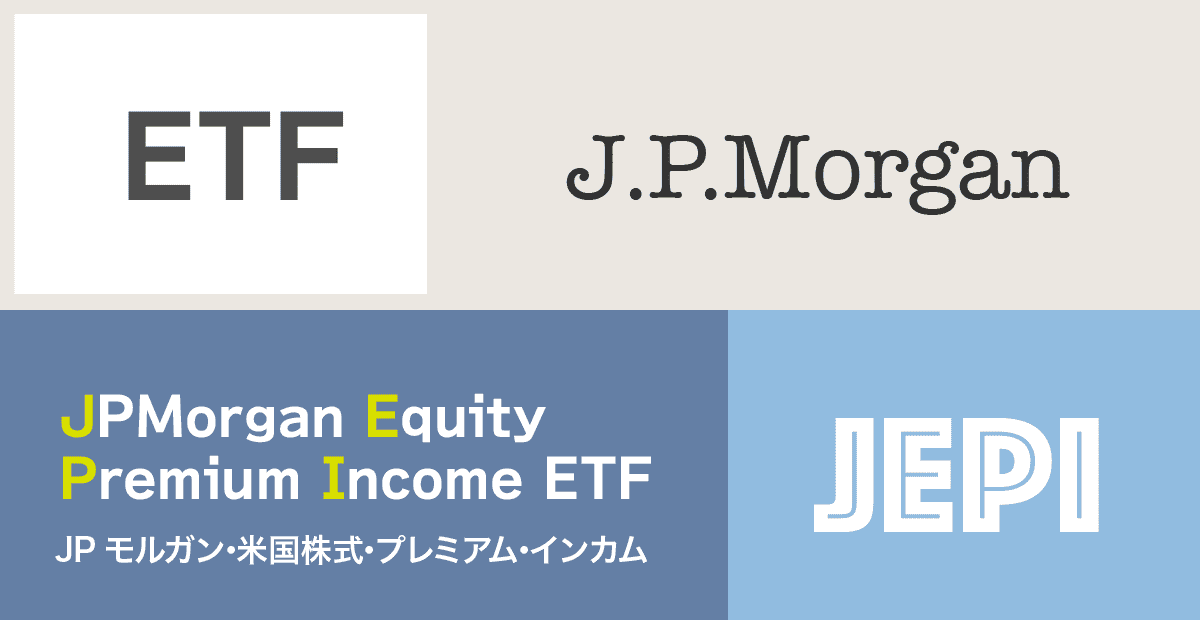このサイトは、私(@mifsee)が個人的に学びながら企業分析や銘柄分析を進め、その過程を記録としてまとめているものです。
あくまで個人の調査・整理を目的とした内容であり、誤りや実際と異なる情報が含まれる可能性があります。
また、MifseeではAI技術を活用した運用や、技術習得を目的とした実験的な取り組みも行っています。ご覧いただく際には、その点をご理解のうえご利用ください。
▼AIが音声変換したポッドキャスト版はこちらからどうぞ。(Spotifyで再生)
- はじめに
- JEPIとはどのような特徴を持つETF?
- カバード・コールとは?
- JEPIは価格上昇だけでなく、収入利得を重視
- ボラティリティを低く抑える目的とは?
- アクティブETFとは何ですか?
- JEPIの経費率は?
- 「高配当」とはどういう意味?
- JEPIの配当利回りは?
- JEPIはなぜこれだけの利回りを出せるのか?
- JEPIの分配金(配当)の支払い時期は?
- JEPIの現在株価と長期チャート
- JEPIに投資するメリットは?
- JEPIの投資で考えられるデメリットは?
- JEPIの構成銘柄は?
- JEPIのセクター比率は?
- JEPIへの組入条件は?
- 長期投資を検討する上で配当利回りの重要性は?
- JEPIの分配金推移は?
- 「JEPIはおすすめしない」という記事、検索も多くみられがその要因は?
- JEPIはニーサの対象として選べるのか?
- JEPIの特徴をまとめると
- JEPI投資の分配金再投資戦略とボラティリティの理解
- JEPIの株を買える証券会社は?
- まとめ
はじめに
米国のETF投資を始めたいけれど、どの銘柄を選べばいいのか迷っている初心者の方へ。
私自身、どの銘柄に投資すべきか、またどのETFを選択するべきか常に悩みながら投資を行っています。
以前に連続増配ETF「VIG」を紹介していますが、今回は高配当ETF「JEPI」の特徴、メリット・デメリットを踏まえ、わかりやすく解説します。
ここでは、高配当ETFとして注目されているJEPIについて、深く調査した内容をアウトプットします。
JEPIがあなたの投資スタイルに合っているか、この記事で確認してみてください。
JEPIとはどのような特徴を持つETF?
- JEPIは、J.P. Morganが提供するアクティブ運用のETF。
- 正式名称は、JPMorgan Equity Premium Income ETF(JPモルガン・米国株式・プレミアム・インカムETF)
- 2020年5月に設定されたETFで比較的新しいETF
- このETFは、米国の大型株とオプションの売却を組み合わせたポートフォリオからの収益を目指している。
- 主な目的は、主要な基準であるS&P 500総回報指数(S&P 500 Index)に関連するリターンを提供すること、そして投資者のリスクを低減させるための波動性の低減を通じて、追加の収益を提供すること。
ETFについてはこちらで詳しく解説。
JEPI(JPMorgan Equity Premium Income ETF)は、以下のような特徴を持つ。
カバードコール戦略を活用
JEPIはカバードコール戦略を取り入れており、キャピタルゲイン(資本利得)とインカムゲイン(収入利得)を両立することを目指している。
ボラティリティの低減
このETFはボラティリティを低く抑えることを目的としており、オプション・プレミアムによる収益を確保することで、市場が下落しても一定のリターンをもたらすように設計されている。
コストの低さ
アクティブETFの中では、JEPIは比較的低いコストを持つ。
高配当
JEPIは高い配当利回りを持つことで知られており、投資家にとって魅力的な選択肢となっている。
カバード・コールとは?
カバードコールは、株式投資とオプション取引を組み合わせた投資戦略の一つ。
具体的には、すでに保有している株式に対して、その株式の売却権を第三者に売る取引を指す。
カバードコールのメカニズム
- 株式の保有: まず、ある銘柄の株式を保有する。
- コールオプションの売却: その保有株式に対して、特定の価格(行使価格)での売却権を第三者に売る。この売却権を「コールオプション」と言う。
- プレミアムの受取: コールオプションを売ることで、オプションの買い手から「プレミアム」と呼ばれる料金を受け取る。
カバードコールのリスクとメリット
- メリット: オプションのプレミアムを受け取ることができるため、収益の一部として加算される。これにより、株価が横ばいやわずかに下落した場合でも、一定の収益を得ることが期待できる。
- リスク: 一方で、株価が大きく上昇した場合、行使価格で株式を売却しなければならないため、その上昇分の利益を享受することができない。
つまりカバードコールは、株価の大きな上昇を犠牲にして、一定の収益を確保する戦略と言える。
市場が横ばいやわずかな下落を示す時期に、収益を増やすための手段として利用されることが多い。
JEPIは価格上昇だけでなく、収入利得を重視
カバードコール戦略を採用するということは、大きな価格の上昇を追求するよりも、安定した収益を目指すETFと言える。
しかし、これは「価格の上昇が全く見込めない」という意味ではなく、市場の状況やJEPIの運用方針、その他の要因によって、価格の上昇も十分に可能である。
要するに、JEPIは高い配当利回りと安定した収益を目指すETFであり、大きなキャピタルゲイン(資本利得)を追求するよりも、インカムゲイン(収入利得)を重視する投資家に向いていると言える。
ボラティリティを低く抑える目的とは?
ボラティリティは、金融商品の価格の変動の激しさや不安定さを示す指標。
具体的には、株価や為替レートなどがどれだけ大きく上下するかを示すものとして使われる。
ボラティリティが高いと、価格の変動が大きいということを意味し、低いと、価格が比較的安定していることを示す。
ボラティリティを低く抑えるとは?
ボラティリティを低く抑えるとは、投資商品の価格の大きな上下動を減少させ、より安定した価格動向を持たせることを目指すことを意味する。
これにより、投資家は予期しない大きな損失を避けることができ、安定したリターンを期待することができる。
なぜボラティリティを低く抑えることが重要なのか?
- リスクの低減: 価格の大きな変動は、投資家にとってリスクとなる。ボラティリティを低く抑えることで、そのリスクを減少させることができる。
- 安定したリターン: 価格の変動が少ない投資商品は、安定した収益をもたらす可能性が高まる。
- 長期的な投資: ボラティリティが低いと、短期的な市場の変動に左右されにくくなるため、長期的な投資に適している。
つまり、ボラティリティを低く抑えることは、投資家が安心して投資を続けるための重要な要素となる。
大きな価格の変動によるリスクを避け、安定した収益を追求することができる。
アクティブETFとは何ですか?
ETF(Exchange Traded Fund)は、株式や債券などの金融商品をまとめて保有する投資信託の一種で、証券取引所で取引される特徴を持っている。
ETFは大きく「パッシブETF」と「アクティブETF」の2つに分けられる。
アクティブETFは、ファンドマネージャーがアクティブに資産の選択や取引を行い、特定の指標(ベンチマーク)を上回るリターンを目指すETFを指す。
アクティブETFの特徴
- ファンドマネージャーが市場の動向や各銘柄の分析を基に、積極的に資産の選択や取引を行います。
- アクティブETFの目的は、参照する指標やベンチマークのリターンを上回ること。
- アクティブな運用を行うため、運用費用や手数料がパッシブETFに比べて高くなることが多い。
アクティブETFとパッシブETFの違い
- パッシブETF: 特定の指標やベンチマークをなるべく正確に追跡することを目的としている。例えば、日経平均株価を追跡するETFは、日経平均の動きになるべく近いリターンを目指す。
- アクティブETF: ベンチマークを上回るリターンを目指し、ファンドマネージャーがアクティブに投資判断を下す。
わかりやすくまとめると
| 比較項目 | アクティブETF | パッシブETF |
|---|---|---|
| 運用戦略 | 運用マネージャーが市場を分析し、個別銘柄の選択やタイミングを決定。 | あらかじめ定められた指数に基づき、その構成銘柄を模倣することを目的とする。 |
| 運用目的 | 市場平均を上回るリターンを目指す。 | 指数と同等のリターンを目指す(市場平均のリターン)。 |
| コスト | アクティブな運用戦略により、手数料や経費率が高くなる傾向がある。 | 指数に連動するための取引が少なく、低コストで運用されることが多い。 |
| リスク | 市場を上回るリターンを目指すが、運用マネージャーの判断が市場の動きと異なる場合、リスクが高まる。 | 市場の動きに連動するため、指数のリスクをそのまま受け入れることになる。 |
| パフォーマンス | 運用マネージャーのスキルに依存し、指数を上回ることもあれば下回ることもある。 | 指数のパフォーマンスに基本的に連動するため、予測可能性が高い。 |
アクティブETFは、専門家の知識や経験を活かして、市場平均を上回るリターンを目指す投資商品。
そのため、リターンの期待値が高い一方で、リスクや運用費用も高くなることが考えらる。
JEPIの経費率は?
JEPIの経費率 (Net Expense Ratio): 0.35%
この経費率は、ETFの運用に関連する費用を示しており、年間の運用資産額に対するパーセンテージとして表示される。
具体的には、JEPIを保有する投資家は、運用資産額の0.35%を年間の経費として支払うことになる。
この経費率は、アクティブ運用のETFとしては比較的低い部類に入る。
しかし、投資を検討する際には、この他にも取引手数料や税金など、さまざまなコストが発生する可能性があるため、十分に注意が必要。
以前に紹介した「VIG」などのパッシブ方運用ETFの経費率は0.06%なので、パッシブ型に比べるとコストは大きくなる。
しかし、一般的なアクティブ運用ETFの経費率: 0.50% – 1.50%くらいとされており、JEPIはその中でもコストは低く、魅力的と言える。
「高配当」とはどういう意味?
「高配当」とは、株式や投資信託などの金融商品が、平均的なものや同じカテゴリの他の商品に比べて、高い配当利回りを持つことを指す。
配当利回りは、1株あたりの配当金をその株の価格で割ったもので、投資家がその株式を保有することで得られる収益の割合を示す指標。
高配当の魅力と注意点をまとめると、
- 高配当の株式や投資信託は、株価の上下に関係なく、定期的に配当を受け取ることができるため、収益の安定性が期待されます。
- 受け取った配当を再投資することで、複利の効果を享受することができる。
- 一方で、高配当が継続的に支払われる保証はなく、高配当を支払う企業がその利益を再投資せずに株主に還元している場合、その企業の成長性に疑問が生じることも考えられる。
つまり、「高配当」とは、投資家がその金融商品を保有することで得られる収益の割合が高いことを意味する。
高配当の投資商品は、安定した収益を求める投資家にとって魅力的な選択肢となることが多い。
JEPIの配当利回りは?
JEPIの配当利回りは8〜10%程度あり、非常に魅力的。
JEPIはなぜこれだけの利回りを出せるのか?
JEPI(JPMorgan Equity Premium Income ETF)が高い利回りを出せる理由に関しては以下。
コールオプション取引の活用
JEPIはコールオプション取引をベースとしたELN(エクイティリンク債)を活用している。これにより、高利回りのクーポンを得つつ、満期に債券を償還することができる。
米国大型株の組み合わせ
JEPIのポートフォリオは、マイクロソフトなどの米国大型株を中心に構築されている。これらの大型株からの配当金と、上記のコールオプション取引からのプレミアムを組み合わせることで、高い月次分配を実現している。
バランスの取れたポートフォリオ
JEPIは、高い配当利回りを追求する一方で、キャピタルゲイン(株価の上昇)も狙いやすいとされている。これにより、投資家は安定した収益を期待することができる。
JEPIはコールオプション取引と米国大型株の組み合わせを活用することで、高い利回りを実現している。
この仕組みにより、JEPIは他の多くのETFとは異なる特徴を持ち、高い配当利回りを提供することができる。
JEPIの分配金(配当)の支払い時期は?
JEPIは、インカム(株式の配当金とオプションプレミアム)を原資として毎月分配を目指している。
ただし、必ずしも毎月分配が行われるわけではなく、分配の有無や額は変動する可能性がある。
JEPIの現在株価と長期チャート
2020年5月から運用された新しいETFのため、運用期間は短い。
グラフを見ると確かに、ボラティリティは低めの動きとなっている
JEPIに投資するメリットは?
- JEPIは、コールオプションを売る「カバードコール戦略」を採用しており、この戦略によってインカム収益を上乗せすることができる。これにより、株価上昇に一定程度追随しつつ、高いインカムゲインを得られるという特徴を持つ。
- JEPIはディフェンシブな銘柄を中心としたポートフォリオで構築されており、市場の変動に対して比較的安定した運用を目指しています。
- JEPIは毎月の分配を目指しており、定期的なキャッシュフローを得ることができるので、投資戦略を組み立てる上でのメリットとなる。
- JEPIは、高い配当利回りを追求する一方で、キャピタルゲイン(株価の上昇)も狙いやすいとされている。これにより、投資家は安定した収益を期待することができます。
JEPIは高いインカムゲインを目指す戦略と、ディフェンシブな銘柄を中心としたポートフォリオの組み合わせにより、投資家にとっての魅力的なメリットを提供している。
JEPIの投資で考えられるデメリットは?
- JEPIはカバードコール戦略を採用しているが、この戦略には制約も伴う。例えば、株価が大きく上昇した場合、カバードコールの売却価格(ストライク価格)を超える利益を享受することができない。
- JEPIは米国大型株を中心としたポートフォリオを持っているが、市場が乱高下する場面では、地道に下がってしまう傾向があるかもしれない。
つまり、JEPIには高いインカムゲインを目指すメリットがある一方で、カバードコール戦略の制約や市場の乱高下に対する影響など、投資家が考慮すべきデメリットも存在する。
これらのデメリットを理解し、自身の投資戦略やリスク許容度と照らし合わせて、JEPIへの投資を検討することが重要。
JEPIの構成銘柄は?
JEPIの構成銘柄数は、136銘柄。
S&P500を中心とした非常に多くの銘柄に分散投資することが可能。
JEPIの主な構成銘柄(上位20銘柄)は以下の通り。
上位20銘柄でウェイトは約19%程度。
| ティッカー | 企業名 | 組入比率 | |
|---|---|---|---|
| 1 | AMZN | アマゾン・ドット・コム | 1.70% |
| 2 | MSFT | マイクロソフト | 1.69% |
| 3 | PGR | プログレッシブ | 1.67% |
| 4 | ADBE | アドビ | 1.64% |
| 5 | TT | トレイン・テクノロジーズ | 1.52% |
| 6 | MA | マスターカード | 1.50% |
| 7 | UNH | ユナイテッドヘルス・グループ | 1.49% |
| 8 | V | ビザ | 1.49% |
| 9 | ACN | アクセンチュア | 1.45% |
| 10 | CME | CMEグループ | 1.45% |
| 11 | ABBV | アッヴィ | 1.42% |
| 12 | INTU | イントゥイット | 1.42% |
| 13 | PEG | パブリック・サービス・エレクトリック・アンド・ガス | 1.41% |
| 14 | CMCSA | コムキャスト | 1.41% |
| 15 | YUM | ヤム・ブランズ | 1.36% |
| 16 | PEP | ペプシコ | 1.34% |
| 17 | APD | エアー・プロダクツ・アンド・ケミカルズ | 1.33% |
| 18 | MDLZ | モンデリーズ・インターナショナル | 1.33% |
| 19 | KO | コカ・コーラ | 1.30% |
| 20 | META | メタ | 1.29% |
誰もが知る有名企業や優良企業が多く含まれている。
参照:JPMorgan Equity Premium Income ETF
その他、リンク債(Equity Linked Notes)、リート(REIT)、マネーマーケット(MONEY MARKET)なども含まれてている。
リンク債(Equity Linked Notes:ELN)とは?
リンク債(Equity Linked Notes、ELN)は、投資商品の一種で、そのリターンが株式や株式指数のパフォーマンスにリンクしている債券。
ELNは、固定収入商品と株式市場のリターンの特性を組み合わせた構造を持っている。
JEPIのセクター比率は?
セクター比率はバランスよく振り分けられており、情報技術、金融、ヘルスケアのセクターに大きく投資していることがわかる。
| セクター | 比率 | |
|---|---|---|
| 1 | Other(他) | 13.80% |
| 2 | Information Technology(情報技術) | 13.50% |
| 3 | Financials(金融) | 13.30% |
| 4 | Health Care(ヘルスケア) | 12.10% |
| 5 | Industrials(資本財) | 11.60% |
| 6 | Consumer Staples(生活必需品) | 11.10% |
| 7 | Consumer Discretionary(一般消費財) | 7.20% |
| 8 | Communication Services(通信) | 4.30% |
| 9 | Utilities(公共事業) | 4.30% |
| 10 | Materials(材料) | 3.20% |
| 11 | Energy(エネルギー) | 2.90% |
| 11 | Real Estate(不動産) | 2.90% |
| 13 | N/A(該当なし) | 0.10% |
JEPIへの組入条件は?
このETFへの組入れ条件は、以下のような特徴を持つ銘柄が選ばれることが一般的。
- 主に市場価値が大きい、安定した大型株に投資する。
- 高い配当利回りを持つ銘柄が選好されることがある。
- オプションプレミアムを最大化するため、ある程度のボラティリティ(価格変動)がある銘柄が選ばれることがある。
- 基本的な財務健全性や成長性など、ファンダメンタルズがしっかりしている企業が選ばれる。
長期投資を検討する上で配当利回りの重要性は?
長期投資を検討する上では、配当利回りはとても重要。
その主な理由は以下。
- 配当は、投資対象から得られる収益の一部であり、株価の上昇によるキャピタルゲインだけでなく、配当も投資のリターンとなる。
- 配当を再投資することで、複利の効果を享受することができる。
JEPIの分配金推移は?
JEPI 分配金は、変動はあるが、0.35〜0.45ドルあたり。
| 権利落ち日 | 金額 |
|---|---|
| 2022/12/01 | 0.61036 |
| 2022/12/29 | 0.57292 |
| 2023/02/01 | 0.44392 |
| 2023/03/01 | 0.41115 |
| 2023/04/03 | 0.44506 |
| 2023/05/01 | 0.42458 |
| 2023/06/01 | 0.36541 |
| 2023/07/03 | 0.3593 |
| 2023/08/01 | 0.29037 |
| 2023/09/01 | 0.33817 |
| 2023/10/02 | 0.36333 |
| 2023/11/01 | 0.35892 |
「JEPIはおすすめしない」という記事、検索も多くみられがその要因は?
「JEPIをおすすめしない」という記事や検索ニーズが多く見られる理由については以下が考えられる。
- JEPIが市場平均や他のETFと比較してパフォーマンスが劣っていると感じる投資家がいるかもしれません。特に、市場が強気の時には、高ボラティリティのETFの方が高いリターンを提供する可能性がある。
- JEPIはカバードコール戦略を取り入れており、一部の投資家はこのアプローチに懐疑的かもしれません。市場が上昇している時には、この戦略は潜在的な利益を制限する可能性があるため。
- アクティブ運用ETFのため、JEPIの運用コストが高いと感じられる場合、それがおすすめしない理由となるかもしれない。
- JEPIの運用戦略やリスクプロファイルが、一部の投資家のリスク許容度や投資目的に合わない場合、JEPIをおすすめしないとの主張となり得る。
- 特定の時期において、市場の変動性が高まると、カバードコール戦略が期待通りの結果をもたらさないことがある。これがJEPIへの否定的な見方につながることがある。
これらの要因から、JEPIは特定の投資目的や、運用スタイルに合わせて選択する必要があり、一概にすべての投資家におすすめできるわけではないと考えられる。
JEPIはニーサの対象として選べるのか?
- 一般的なNISAの枠内での取引は可能だが、つみたてNISA(積立NISA)を使ってJEPIに投資することはできないため、つみたてNISAの特典を享受することはでない。
- つみたてNISAで投資できるのは、一定の要件を満たした国内投資信託(及び一部の国内ETF)に限られるため、海外ETFであるVIGには投資できない。
JEPIの特徴をまとめると
- JEPIは高い配当利回りを提供することを目指しており、特にインカム志向の投資家に適している。
- カバードコール戦略を採用しており、保有する株式に対してコールオプションを売ることでオプションプレミアムを収入として得る。
- JEPIは毎月の分配金を目指しており、定期的なキャッシュフローを投資家に提供する。
- 市場のボラティリティを低く抑えることを目的としており、市場の乱高下に対して比較的安定した運用を目指している。
- JEPIはアクティブに運用されており、運用チームが市場状況に応じて投資判断を行っている。
- 米国の大型株を中心に構成、これらの企業からの配当金とオプション取引からの収益をもとに分配金を支払っている。
- リスク管理にも注力しており、ポートフォリオのリバランスやセクター分散を通じてリスクをコントロールしている。
- 経費率は0.35%だが、他のアクティブ運用ETFと比べて低め。
JEPIはこれらの特徴により、特に配当収入を重視する投資家や市場の変動に強いポートフォリオを求める投資家にとって魅力的な選択肢となっている。
JEPI投資の分配金再投資戦略とボラティリティの理解
毎月の分配金で1株購入するには?
JEPIの分配金を利用して毎月1株を購入するには、JEPIの株価と分配金の額を考慮する必要がある。
例えば、JEPIの株価が平均50〜55ドルで推移していると仮定すると、毎月の分配金が55ドル以上であれば、その分配金を再投資して1株を購入することが可能。
ただし、実際の分配金の額は市場の状況やETFのパフォーマンスによって変動するため、毎月1株を購入できるとは限りません。
ボラティリティが低いことのメリットとデメリット
ボラティリティが低いという特徴は、市場の価格変動が比較的小さいことを意味し、これは安定した投資環境を好む投資家にとってメリットとなります。
一方で、価格の変動が少ないと、短期間での大きな利益を狙う投資戦略には不向きであり、デメリットになる可能性があります。
また、ボラティリティが低いことが購入タイミングをあまり気にする必要がないという考え方もありますが、これは投資家の戦略や目的によって異なります。
分配金での株数増加の可能性
あなたが保有しているJEPIの資産が6700ドルで、年間利回りが10%だとすると、年間で670ドルの収入が見込めます。
これを単純に12ヶ月で割ると、毎月約55.83ドルの分配金が得られる計算になる。
JEPIの株価が55ドルで安定していれば、理論上は毎月の分配金で1株を購入することが可能。
ただし、実際の分配金の額や株価は変動するため、毎月株数が増えるとは限らない。
複利の恩恵について
6700ドルを1ドル150円で計算すると、100万5千円になる。
つまり約100万円程度のJEPI資産を築くことで、分配金を再投資することによる複利の効果を享受しやすくなる可能性がある。
ただし、複利効果を最大限に活用するためには、分配金の再投資が継続的に行われ、かつ投資対象のパフォーマンスが安定している必要。
為替の影響を考慮する場合、配当金はドルで支払われます。
そのため、ドルで再投資を行うことで、為替変動によるリスクを抑えることが可能です。
現在円安が進んでいる状況では、円で外国株を購入すると、為替変動の影響をより受けやすくなります。したがって、米国投資を検討する際には、為替リスクを重要な考慮事項として扱うべきです。
JEPIの株を買える証券会社は?
JEPIの株を取り扱っている主要な証券会社をリストアップしました。私自身はSBI証券で購入をしていますが、多くの証券会社で購入が可能です。
ETFの仕組みやリスクを正しく認識した上でご自身で判断して検討してみてください。
まとめ
米国のETF「JEPI」の特徴や投資のメリット・デメリットを詳しく解説しました。
このETFは、安定した配当収入を求めるインカム志向の投資家にとって特に魅力的な選択肢です。
低ボラティリティという特性は市場の不確実性の中で一定の安心感を提供し、毎月の分配金は投資家にとって安定したキャッシュフローの源泉となり得ます。
私自身もJEPIを購入しており、分配金はまだ多くはありませんが、毎月のインカム収入があることは非常に魅力的だと感じています。
長期投資という時間を味方につけ、毎月コツコツと株数を増やしていくことで、順調な資産形成につながるETFと言えます。
ここでは紹介しませんでしたが、同じ仕組みを持ち、ナスダック100の構成銘柄を中心とした「JEPQ」(JPMorgan Nasdaq Equity Premium Income ETF)も魅力的です。
こちらはナスダック銘柄が多いため、JEPIと比較して価格上昇によるパフォーマンスが得やすい可能性があります。
JEPIやJEPQは、インカム収入を目的とした投資の魅力的な選択肢となり得ます。
FIRE(Financial Independence, Retire Early)生活を目指すというような極端な戦略を採る方は例外ですが、資産構築の一環としてJEPIを利用することは有益な選択であると考えられます。
私も活用中!moomoo証券の機能を最大限に引き出そう
私がmoomoo証券を使っていて最も気に入っている点は、アプリが使いやすく、投資において重要となる深い情報収集が簡単にできること。
さらに、大口や中口投資家の動向を確認できる機能があり、銘柄の先行きを考える上でとても助かっています。各銘柄のニュースや決算関連情報が豊富で、日本語自動翻訳もサポートしているため、海外の情報を即座にチェックできるのが嬉しいポイント。
米国株取引手数料もmoomoo証券が一番安いです。
興味のある方は、このバナーリンクから簡単に登録できます!





